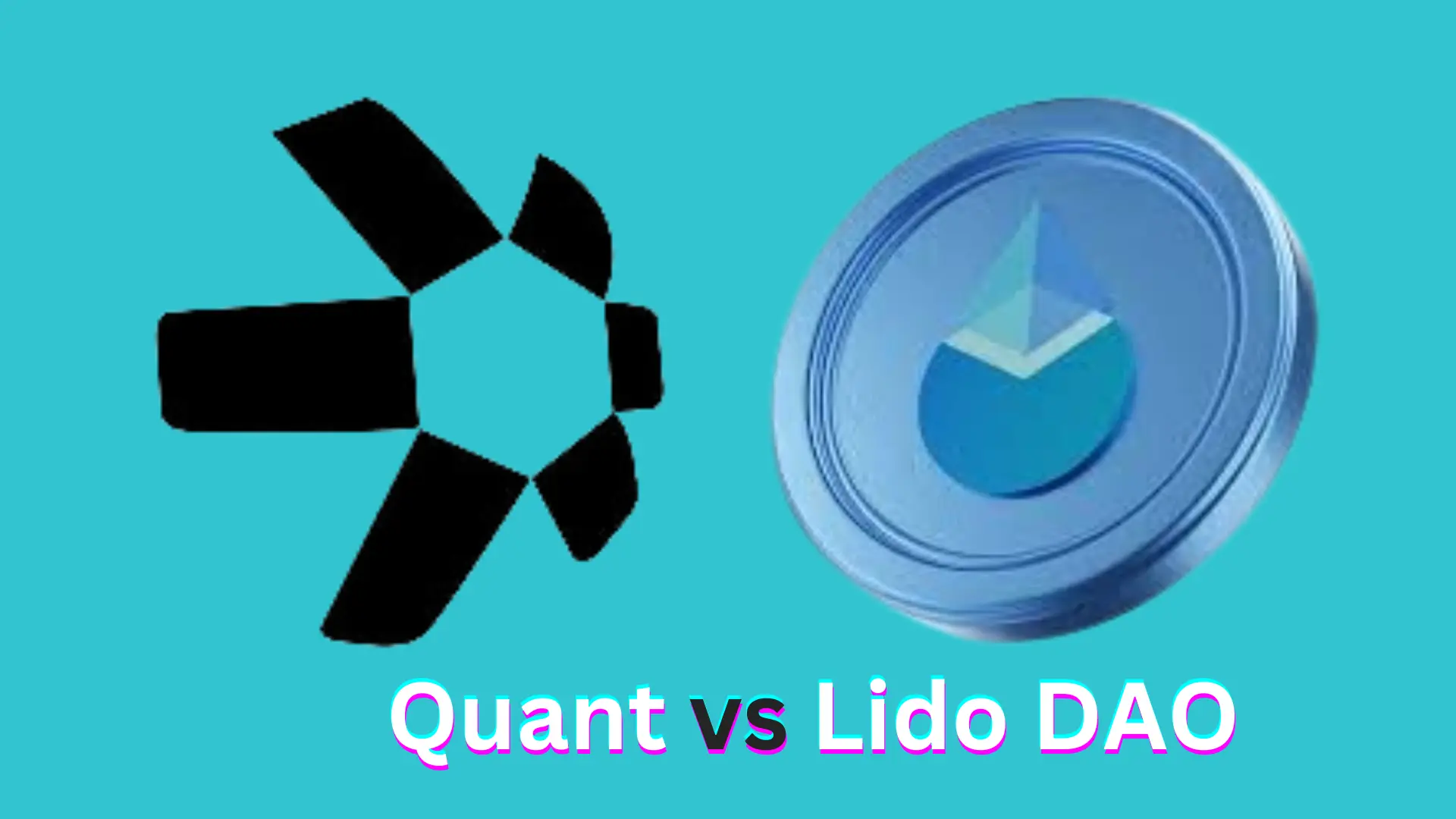In the world of decentralized finance (DeFi) and blockchain, platforms like Quant and Lido DAO have gained significant attention due to their unique offerings. While Quant focuses on solving the challenge of blockchain interoperability,
Lido DAO is a leader in liquid staking solutions. This article compares these two platforms, highlighting their key features, technology, use cases, and the value they bring to the broader crypto ecosystem Quant vs Lido DAO.
Overview of Quant
What is Quant?
Quant is a blockchain platform designed to solve the interoperability issue between different blockchain networks.
Through its Overledger Network, Quant allows seamless communication between public and private blockchains, enabling businesses and developers to build multi-chain decentralized applications (mDApps) Quant vs Lido DAO.
Key Features of Quant
- Overledger Network: Quant’s flagship technology enables interoperability across various blockchains, allowing data and assets to move between networks without friction.
- Multi-Chain dApps: Developers can build decentralized applications that operate across multiple blockchains, enhancing flexibility and cross-chain functionality.
- Enterprise-Grade Solutions: Quant caters to enterprises by providing blockchain solutions that integrate with existing systems, promoting adoption in traditional industries like healthcare, finance, and supply chain.
- Security and Scalability: Quant’s Overledger Network ensures security, scalability, and robust performance, even when working with multiple chains.
Overview of Lido DAO
What is Lido DAO?
Lido DAO is a decentralized autonomous organization that provides liquid staking solutions, allowing users to stake their assets (such as Ethereum) and still maintain liquidity by receiving a tokenized version of their staked assets (e.g., stETH for staked Ethereum).
This helps users continue participating in DeFi while earning staking rewards Quant vs Lido DAO.
Key Features of Lido DAO
- Liquid Staking: Lido DAO allows users to stake their assets while still having the ability to trade or use those assets in DeFi protocols through liquid staking derivatives.
- Multi-Chain Staking: Lido supports staking across several blockchains, including Ethereum, Solana, and Polygon, giving users access to diverse networks.
- DAO Governance: The Lido platform is governed by its decentralized community through Lido DAO, where token holders can vote on key protocol decisions and upgrades.
- Earning Potential: Lido helps users maximize returns by allowing them to earn staking rewards while also participating in other DeFi opportunities.
Comparison of Technology
Interoperability
- Quant: Interoperability is Quant’s core mission. The Overledger Network connects various blockchains, enabling developers and businesses to create multi-chain applications and transfer data and assets between different networks seamlessly.
- Lido DAO: While Lido doesn’t focus on interoperability between blockchains, it supports staking across multiple blockchains, such as Ethereum, Solana, and Polygon. Lido’s primary concern is providing liquidity and flexibility for staked assets Quant vs Lido DAO.
Staking
- Quant: Quant does not offer staking as its focus is primarily on blockchain interoperability and enterprise solutions.
- Lido DAO: Lido’s liquid staking is its flagship feature, allowing users to earn staking rewards while retaining liquidity through tokenized staking derivatives. This feature is essential for DeFi users who want to maximize capital efficiency.
Use Cases
- Quant: Quant’s primary use cases revolve around enterprise solutions, cross-chain data transfer, and multi-chain dApps. It is particularly appealing to industries that require secure and efficient communication between private and public blockchains, such as healthcare, banking, and logistics Quant vs Lido DAO.
- Lido DAO: Lido DAO is widely used by individual investors and institutions looking to stake their assets while still participating in DeFi. Users who stake ETH, SOL, or MATIC through Lido receive liquid staking tokens, which can then be used for lending, trading, or as collateral in DeFi protocols Quant vs Lido DAO.
Strengths and Weaknesses
Strengths of Quant
- Interoperability Leader: Quant’s Overledger Network is a pioneering solution for cross-chain communication, making it a leader in blockchain interoperability.
- Enterprise Adoption: Quant’s focus on providing blockchain solutions for businesses sets it apart from other platforms, giving it a unique value proposition in industries that require seamless data and asset transfer between networks.
- Scalability: Quant’s architecture allows it to scale easily, making it suitable for large-scale enterprise applications.
Weaknesses of Quant
- Complexity: Understanding and utilizing Quant’s Overledger Network may be challenging for developers unfamiliar with multi-chain frameworks.
- Limited DeFi Use: While Quant excels in enterprise and cross-chain applications, it has less focus on DeFi or retail investor use cases compared to platforms like Lido.
Strengths of Lido DAO
- Liquid Staking: Lido’s innovative liquid staking solutions make it easier for users to earn staking rewards while keeping their assets liquid, unlocking new opportunities in DeFi.
- Multi-Chain Support: Lido’s expansion into multiple blockchains (Ethereum, Solana, Polygon) gives users flexibility in staking various assets across different networks.
- DAO Governance: The decentralized governance model empowers the Lido community, giving users a say in the protocol’s future developments and upgrades.
Weaknesses of Lido DAO
- Risk of Staked Derivatives: Liquid staking derivatives, such as stETH, carry risks like liquidity risks during extreme market conditions, where staked derivatives might deviate from the price of the underlying asset.
- Dependency on Network Health: Lido’s reliance on the health of the networks it supports (like Ethereum’s transition to Proof of Stake) introduces risks tied to blockchain updates or delays Quant vs Lido DAO.
Conclusion
Both Quant vs Lido DAO represent cutting-edge innovations in the blockchain space but address different problems. Quant focuses on solving blockchain interoperability and is particularly useful for enterprises looking to integrate multiple blockchain networks. On the other hand, Lido DAO revolutionizes staking by offering liquid staking solutions, allowing users to earn rewards while retaining liquidity.
For businesses and developers needing cross-chain functionality and enterprise-grade blockchain solutions, Quant is the platform of choice. In contrast, for retail and institutional investors seeking flexible staking opportunities while maximizing their participation in DeFi, Lido DAO provides an unmatched solution Quant vs Lido DAO.
Ultimately, both platforms offer significant value, but their use cases and target audiences are distinct, serving different needs within the broader blockchain ecosystem Quant vs Lido DAO.

